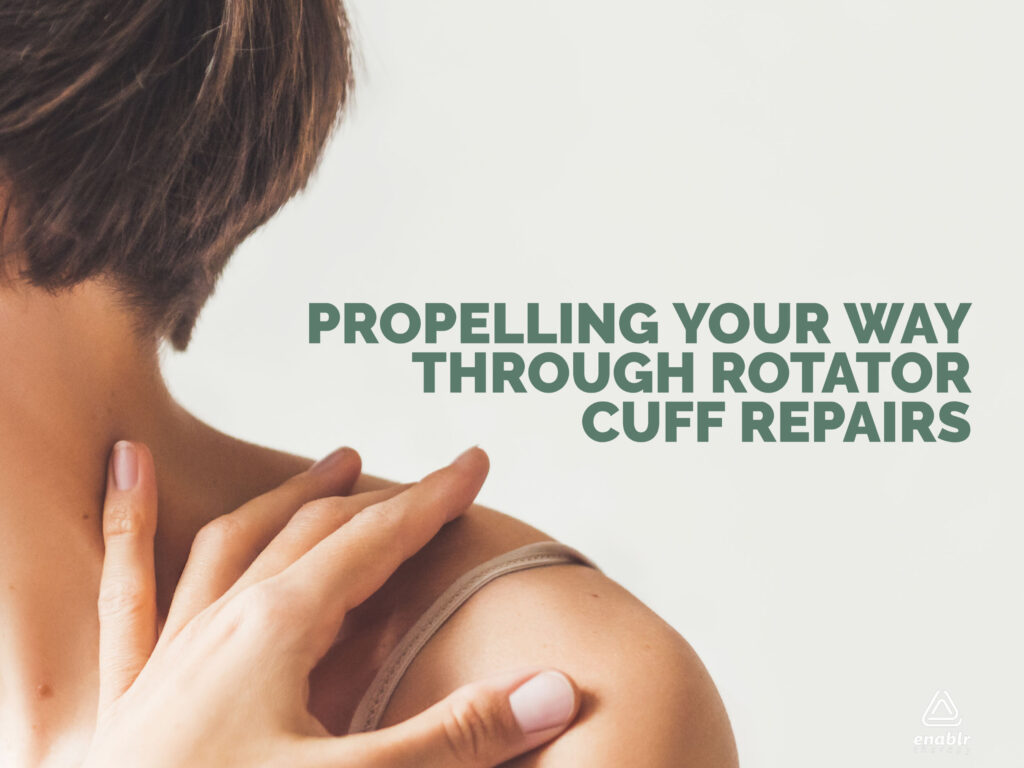
The rotator cuff is composed of what is known as the “SITS muscles.” These are four muscles that help to stabilize the shoulder and assist with all of its movements. A typical rotator cuff injury is a result from overuse of the shoulder or trauma. This causes one or multiple tendons to become detached from their insertion points. With the detachment, comes instability of the shoulder, putting the remaining tendons/muscles at risk of injury if the shoulder continues to be used. It is important to immobilize the shoulder and ice often to decrease inflammation until you are able to see your doctor.
Post Injury
Surgery
Depending on your age and activity level, surgery is often recommended if muscles become detached. Following surgery, you will wear a sling or shoulder immobilizer that keeps your shoulder in a limited range to allow healing and prevent re-injury. You will typically wear this for 4-6 weeks, dependent on how many tendons needed to be repaired. You can manage pain and decrease inflammation with ice and pain medication prescribed by the doctor.
Rehabilitation
Physical Therapy
It is important to begin physical therapy soon after the surgery to safely regain range of motion and strength in the affected shoulder. The initial goal of physical therapy will be to improve your range of motion through passive movements.
Passive
Passive means that your shoulder is being moved while your muscles remain relaxed and unengaged. Through massage and passive range of motion movements, your shoulder will safely navigate movement without risk of reinjury to the affected muscles.

Active
Your doctor will partner with your therapist in your treatment. There will be a protocol regarding their timeline of healing and when active-assisted and active activities can begin. Active-assisted means you can start to activate the muscles within the affected shoulder. This will improve range of motion while also using another component/tool to achieve the full range of motion. Additionally, this is the beginning of restrengthening the shoulder.
Example:
One active-assisted exercise is pushing a washcloth up along a wall. Use your shoulder strength to go as far as you can. Then, transition to walking closer to the wall, allowing further motion through the change in body position. Overall, be sure to listen to your body during all exercises. A stretch should always feel like a good pull, but NEVER sharp and painful.
The last step for physical therapy is returning to your prior level of function through active exercises by regaining your full-shoulder strength after full-range of motion is conquered. Active means you are engaging your muscles to perform all of the activities on your own. Strengthening the shoulder helps to support the joint and prevent re-injury from occurring.
How Can Enablr Help?
If you have recently injured your shoulder or had surgery for repair, Enablr Therapy has talented Physical Therapists that can come to your home, work, or gym to help guide you through your recovery process. View our therapy services page to learn more!
References:
U.S. National Library of Medicine. (2019, April 21). Rotator cuff exercises: Medlineplus medical encyclopedia. MedlinePlus. Retrieved September 28, 2021, from https://medlineplus.gov/ency/patientinstructions/000357.htm.


